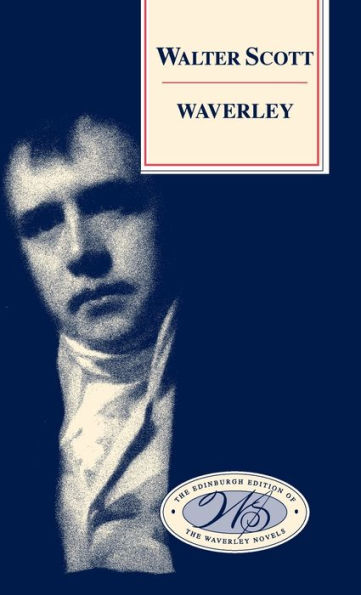

Hardcover
-
PICK UP IN STORECheck Availability at Nearby Stores
Available within 2 business hours
Related collections and offers
Overview
- A clean, corrected text
- Textual histories
- Explanatory notes
- Verbal changes from the first-edition text
- Full glossaries
Edward Waverley is a young, cultured man whose sensibilities lead to his involvement in the Jacobite Rising of 1745. In his journey into Scotland, down to Derby, and back up again, he explores the cultural and political geography of Great Britain.
Waverley, or 'tis Sixty Years Since was Scott's first novel, but like its final chapter, 'A Postscript, which should have been a Preface', it appears as one of the last in this series, so that the full weight of experience gained from editing Scott's fiction can be brought to understanding his most influential novel, the one that gave its name to the Waverley Novels. To this edition, P. D. Garside brings new insights and new information, and he establishes a text that is significantly different from its predecessors.

Product Details
| ISBN-13: | 9780748605675 |
|---|---|
| Publisher: | Edinburgh University Press |
| Publication date: | 11/23/2007 |
| Series: | Edinburgh Edition of the Waverley Novels |
| Pages: | 608 |
| Product dimensions: | 5.40(w) x 8.60(h) x 1.60(d) |
| Age Range: | 18 Years |
About the Author
Table of Contents
Acknowledgements Introduction Sir Walter Scott: A Brief Chronology A Note on the Text Abbreviations for Works Consulted for AnnotationsWaverley Scott’s Notes to Waverley,Volumes One and Two
Appendix A: Selected Reviews of Waverley (1814–31)
- From the Quarterly Review (July 1814) [John Wilson Croker]
- From the Scots Magazine (July 1814)
- From the British Critic (August 1814)
- From the Antijacobin Review and Magazine (September 1814)
- From the Scourge (October 1814)
- From the Edinburgh Review (November 1814) [Francis Jeffrey]
- From the Monthly Review (November 1814)
- From the Critical Review (March 1815)
- From the London Magazine (June 1829)
- From the North American Review (April 1831)
Appendix B: The Union of 1707
- Jonathan Swift, “Verses Said to Be Written on the Union” (1707)
- From Daniel Defoe, A Tour Thro’ the Whole Island of Great Britain (1724–27)
- From Daniel Defoe, A Review of the State of the British Nation (1707)
- “The Union” (1819)
Appendix C: The Jacobite Rebellion of 1745
- Tobias Smollett, “Tears of Scotland” (1746)
- Songs from The Jacobite Relics of Scotland (1819)
- “Here’s to the King, Sir”
- “The King shall enjoy his own again”
- Songs from Jacobite Songs and Ballads (1887)
- “Maclean’s Welcome”
- “Will he no come back again”
- “O’er the Water to Charlie”
- From Henry Fielding, The History of the Present Rebellion in Scotland (1745)
- From Walter Scott, Redgauntlet. A Tale of the Eighteenth Century (1824)
Appendix D: Scottish Folklore and Legend in Contemporary Literature
- From James Macpherson, “The Battle of Lora” (1803)
- From Elizabeth Hamilton, The Cottagers of Glenburnie (1808)
- From Anne MacVicar Grant, Essays on the Superstitions of the Highlanders of Scotland (1811)
Select Bibliography and Works Cited
